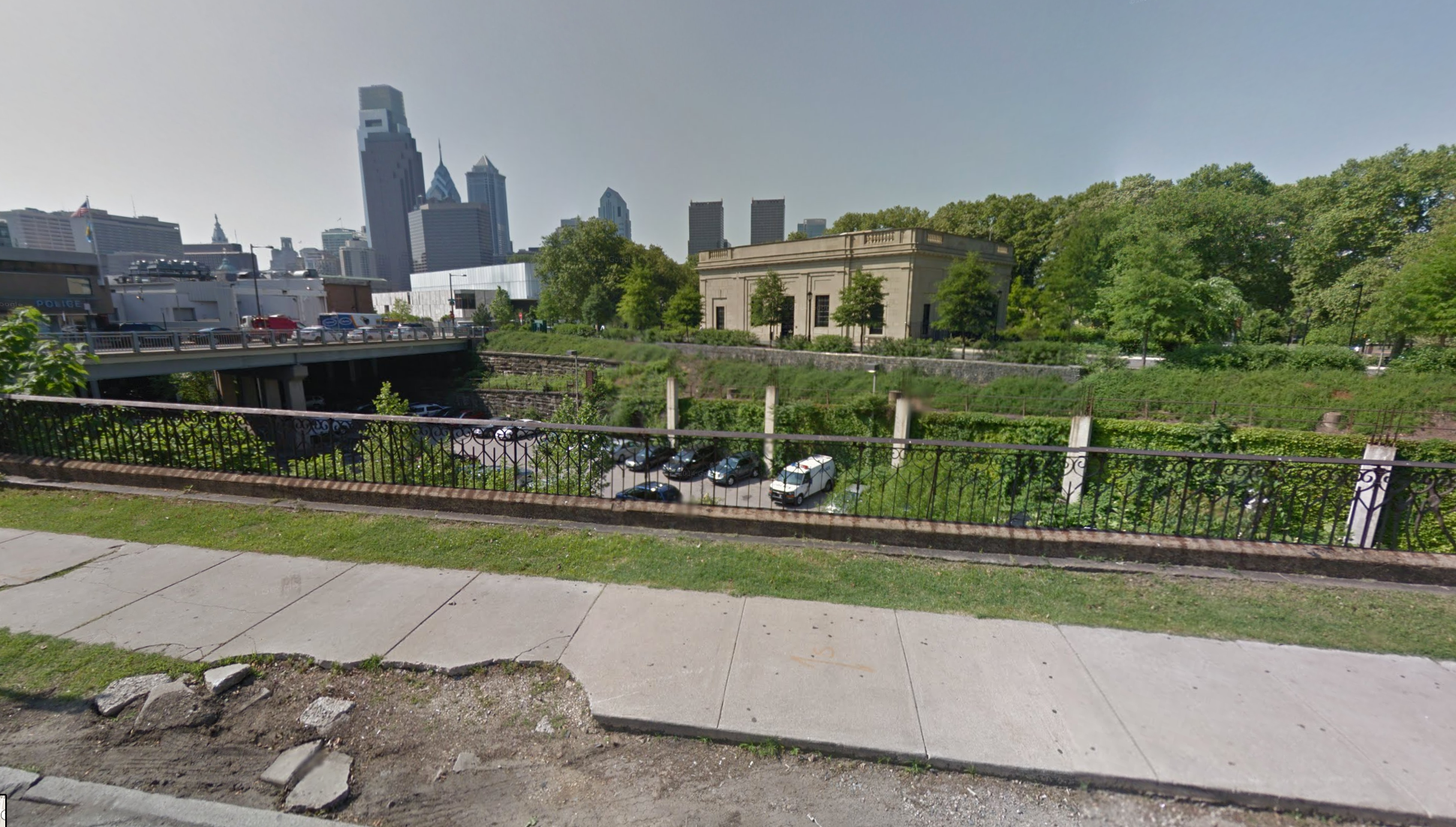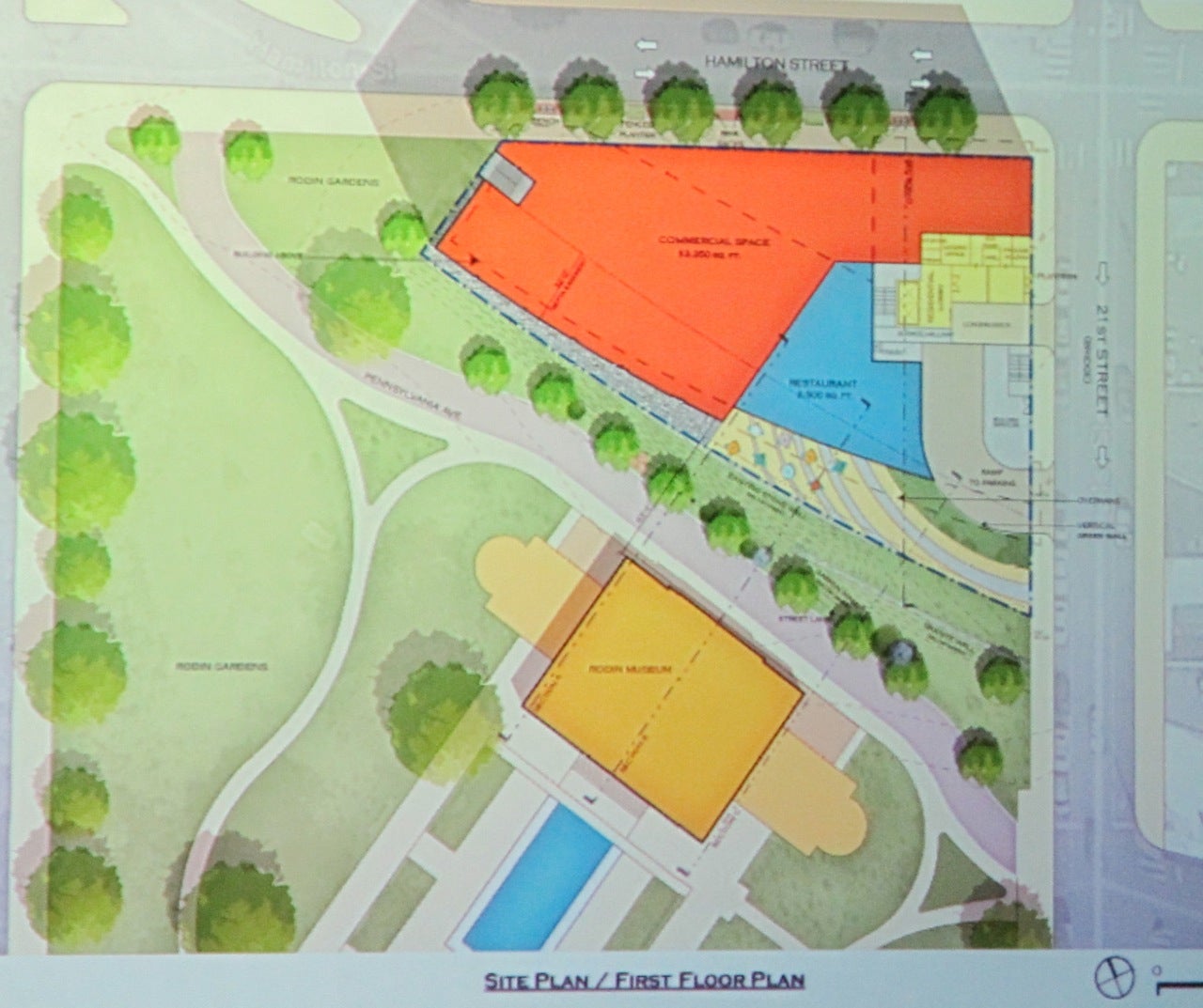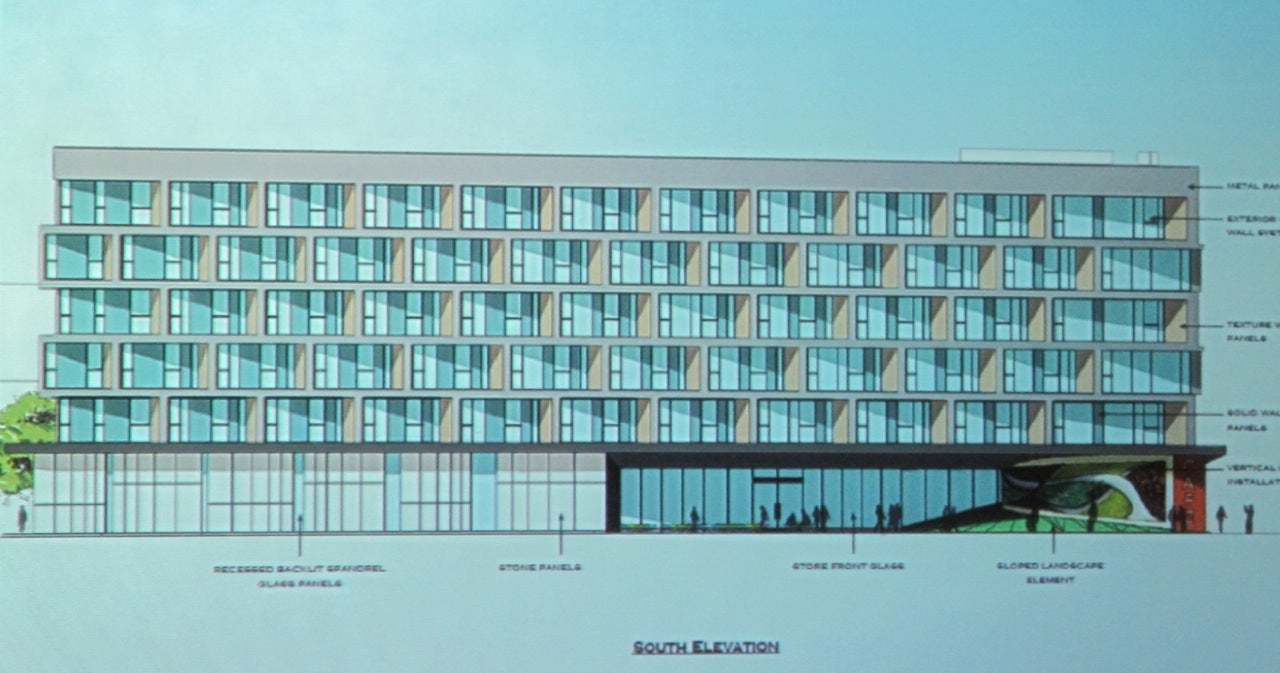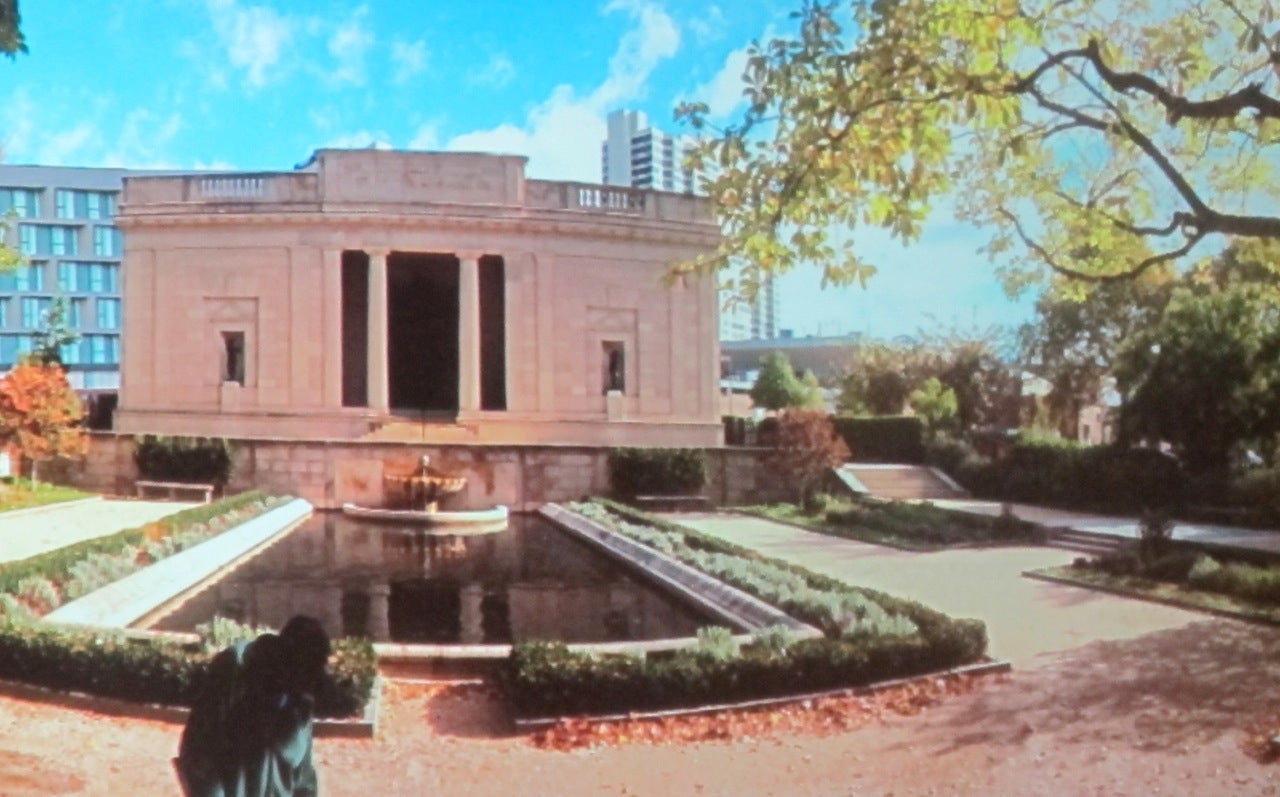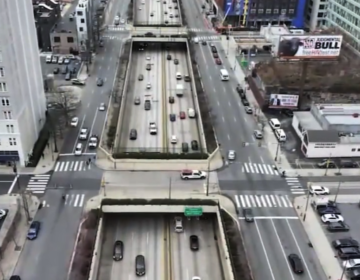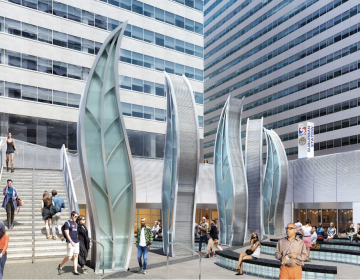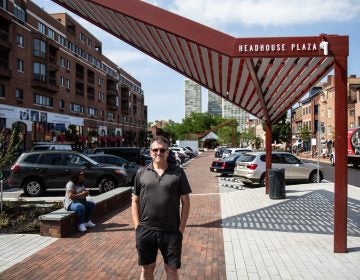A Philadelphia problem at the Art Commission: It all makes sense until you get into the weeds
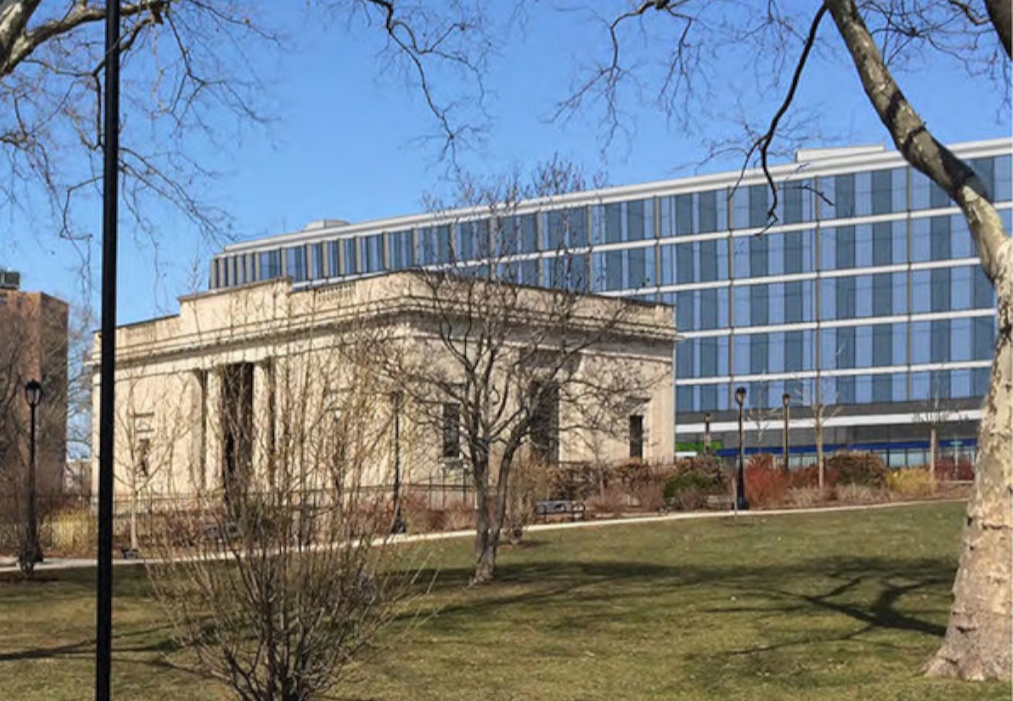
What’s wrong with this picture? There’s an ugly, vacant hole in the ground in a nice section of town. And there’s a developer with a good track record of reasonably priced work who wants to build a mixed-use apartment and restaurant complex above that abandoned, below-grade railbed that’s only being used for 9th police district parking.
Seems like a plan, right? Nope. Go back to the drawing board.
The Art Commission confronted a problem that feels unique to Philadelphia Wednesday morning when it heard an information-only presentation about a mixed-use development that brought with it a convergence of potential historic designation concerns, design appropriateness and sensibility, the plight of long-time blight, private development rights, traffic issues, a lack of consensus among near neighbors and a really big no-no, encroachment on sacred architecture.
The subject of the hearing was a project proposed at 2100 Hamilton Street in the Logan Square neighborhood by Cross Properties and Barton Partners. As described by Barton principal Thomas C. Barton III, the $24-million endeavor would include 120 apartments targeted at millenials and empy nesters, starting at around $2,000 a month, and would feature a restaurant. It would also sit 60 feet from the revered Rodin Museum, on top of a derilict rail line that could have a future as an inner-city trail.
Following the applicants’ presentation, commissioners quickly identified potential project killing problems associated with cost and quality of construction and proximity to the Rodin Museum and the Benjamin Franklin Parkway.
- For Moe Booker the plan was not aesthetically pleasing, given the fact that the Parkway is Philadelphia’s version of the Champs-Elysées. “That building, the way it is built, cancels out the Rodin Museum. The Rodin Museum is smooth and calm and invites you to look at it. And this says ‘hey, I’m over here’ and you go right by it. I would not like to see it done.”
- Patricia Alexander Sanford had an issue with the total cost of the project, noting that “where this building is located it should cost much more money to build than $24 million.”
- Emanuel Kelly had done some research on the area in question and noted that the Pennsylvania Bureau of Historic Preservation (PMHC) could have some jurisdictional issues. “This is a hugely important part of the city and the Parkway District is eligible for designation to the national register,” Kelly noted. “The Reading Line is also eligible. The Parkway District, which was designated by the Department of Interior has a designation equivalent to being on the national register. Secondly, my personal opinion is it should not be built over the right-of-way. When it was built, the Rodin Museum was intended to be seen from the back as well as the front.”
And that wasn’t all.
A group of historical experts and cultural stakeholders also had their say about the nature of the proposal.
David Brownlee, a historian of modern architecture whose interests embrace a wide range of subjects in Europe and America, from the late eighteenth century to the present, felt that the project should be stopped based on the danger it presented to the values of “public buildings and public interest.” Of the Rodin he said “this little building looks out in all directions. It was designed to juxtapose with nature, it is in many way the essence of the building. We have brought the Parkway into the public realm, this project needs to be as thoughtful as our recent work on the Parkway. We cannot allow the Rodin to be used as a piece of garden ornament in front of a rather ordinary apartment building and its cafe.”
Gail Harrity, President and COO of the Philadelphia Museum of Art / Rodin Museum, opposed conceptual approval and focused on: 1. The danger that the current proposal would diminish the Rodin Museum’s visual appeal; 2. The quality of the proposal’s design is deficient for its location; and 3. the creative development of a rail cut would be limited by the project.
Ed Panek, Chairman of the Zoning Committee for the Logan Square Neighborhood Association, said what the near neighbors think about the project is crucial. “The problem is defining who the near neighbors are. There are stong views about whether this project should be built. The problems include proximity to Rodin, and traffic. I’ve been trying to get near neighbors’ consensus and it’s been difficult. You should hold off a decision until near neighbors reach consensus.”
Mark Focht, First Deputy Commissioner of Parks & Facilities, reminded the commission that the project site is a privately owned parcel. The land immediately adjacent to the project site is under the jurisdiction of P&R. About a month ago, Focht said P&R gave conceptual approval to the project with seven key conditions related to land use, not the architecture of the site.
Following the testimony, commissioner Sean Buffington, based on what he had just heard, suggested that the commission would not conceptually approve the plan but he did not rule out some kind of development at the site in the future. He told developer David Blumenfeld that there were serious impactful concerns about the project. He suggested that the develoiper withdraw the proposal and that going forward the commission would be happy to work with the development team on a redo of the project. Blumenfeld agreed to withdraw the proposal at this time.
Stay tuned.
View the entire meeting video below.
WHYY is your source for fact-based, in-depth journalism and information. As a nonprofit organization, we rely on financial support from readers like you. Please give today.



